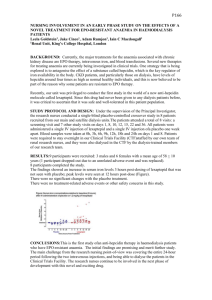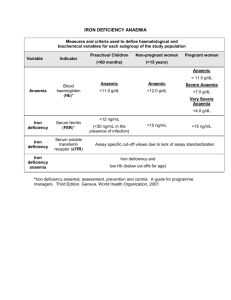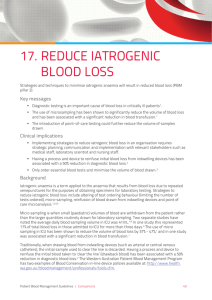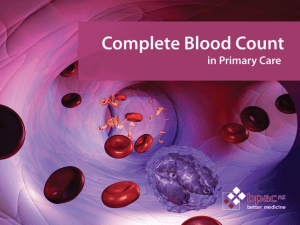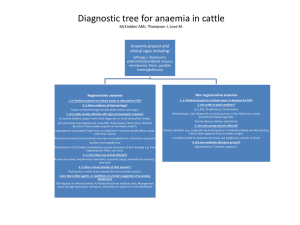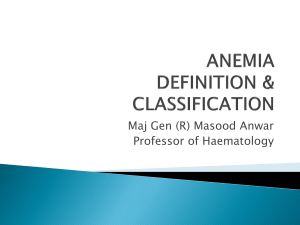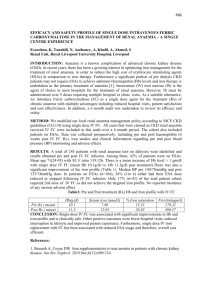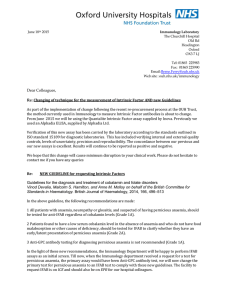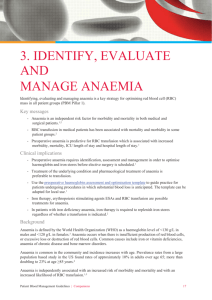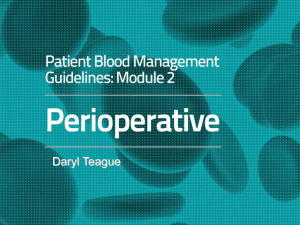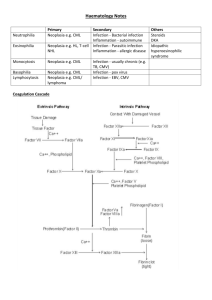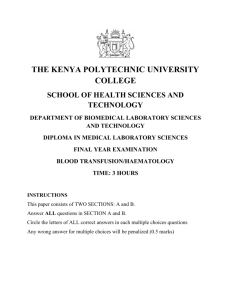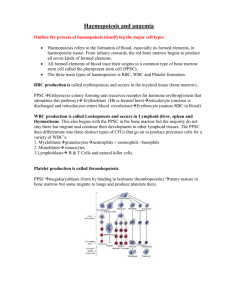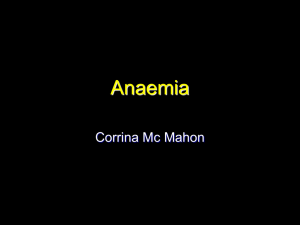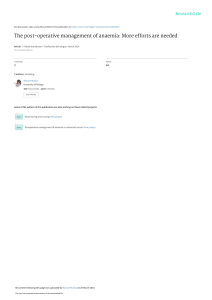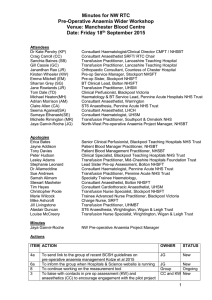Checklist - UK Blood Transfusion and Tissue Transplantation Services
advertisement
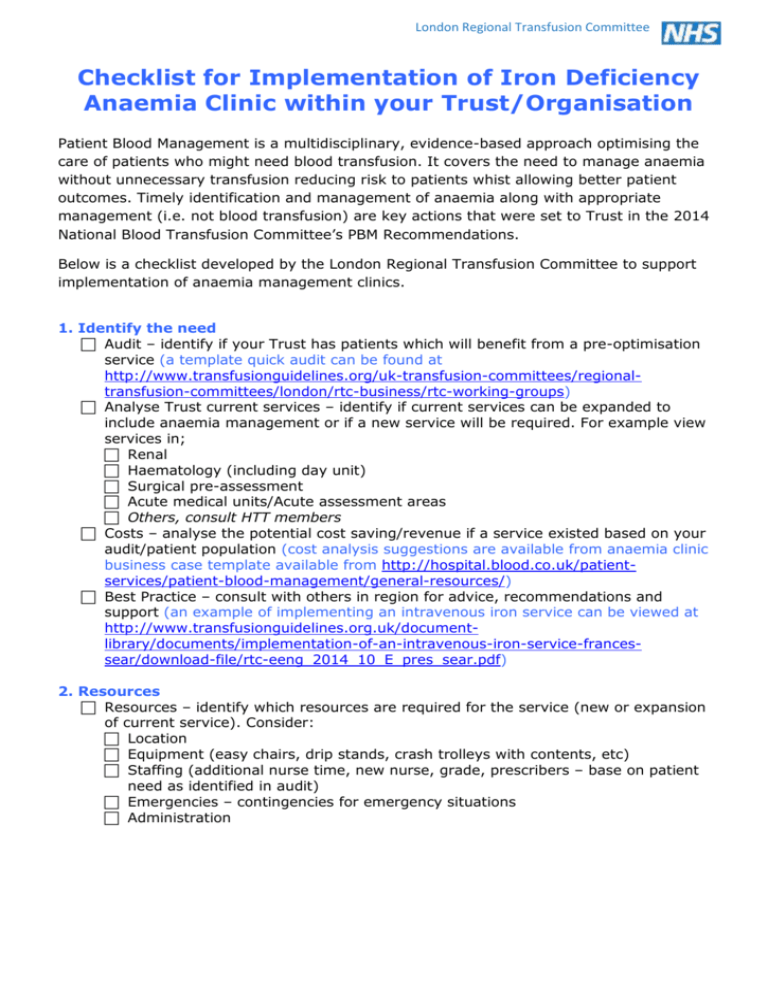
London Regional Transfusion Committee Checklist for Implementation of Iron Deficiency Anaemia Clinic within your Trust/Organisation Patient Blood Management is a multidisciplinary, evidence-based approach optimising the care of patients who might need blood transfusion. It covers the need to manage anaemia without unnecessary transfusion reducing risk to patients whist allowing better patient outcomes. Timely identification and management of anaemia along with appropriate management (i.e. not blood transfusion) are key actions that were set to Trust in the 2014 National Blood Transfusion Committee’s PBM Recommendations. Below is a checklist developed by the London Regional Transfusion Committee to support implementation of anaemia management clinics. 1. Identify the need Audit – identify if your Trust has patients which will benefit from a pre-optimisation service (a template quick audit can be found at http://www.transfusionguidelines.org/uk-transfusion-committees/regionaltransfusion-committees/london/rtc-business/rtc-working-groups) Analyse Trust current services – identify if current services can be expanded to include anaemia management or if a new service will be required. For example view services in; Renal Haematology (including day unit) Surgical pre-assessment Acute medical units/Acute assessment areas Others, consult HTT members Costs – analyse the potential cost saving/revenue if a service existed based on your audit/patient population (cost analysis suggestions are available from anaemia clinic business case template available from http://hospital.blood.co.uk/patientservices/patient-blood-management/general-resources/) Best Practice – consult with others in region for advice, recommendations and support (an example of implementing an intravenous iron service can be viewed at http://www.transfusionguidelines.org.uk/documentlibrary/documents/implementation-of-an-intravenous-iron-service-francessear/download-file/rtc-eeng_2014_10_E_pres_sear.pdf) 2. Resources Resources – identify which resources are required for the service (new or expansion of current service). Consider: Location Equipment (easy chairs, drip stands, crash trolleys with contents, etc) Staffing (additional nurse time, new nurse, grade, prescribers – base on patient need as identified in audit) Emergencies – contingencies for emergency situations Administration 3. Engagement HTC – Present need and requirements to gain approval to start work Ownership – agree who will own this clinic and where biggest benefits will be found Sell it – present and engage the targeted clinical area and different appropriate forums (include Trust newsletters, intranet, etc) Champion/lead – agree a non-HTT lead for this project Action plan – initiate with champion/lead. Report on this to HTC and clinical Governance Business Case – present case for viable service that benefits patients to senior manager for project approval (e.g. Operational Manager, Service Divisional Lead, Budget Holders, etc) (a template business case is available at http://hospital.blood.co.uk/patient-services/patient-blood-management/generalresources/) 4. Policy & Protocol Providers - review available iv iron therapy drugs. Review if any already exist on Trust formulary or liaise with pharmacy to select a provider which best meets Trust needs Develop and gain approval for the anaemia service policy. Consider; Linking to current policies Referral forms Care pathways (example flow charts for anaemia services are available from http://www.transfusionguidelines.org/uk-transfusion-committees/regionaltransfusion-committees/london/rtc-business/rtc-working-groups) Review by pharmacy, clinical lead, HTC, service manager, clinical governance, commercial suppler of iv iron drug Ratify by appropriate people and committees Audit – include system to review and audit uptake and outcomes of policy (regular/continuous data collection) 5. Communications Referrals – inform areas for referral source that an anaemia management service is set up. Include which patient referrals are appropriate and how they can access the pathway Publicise – projected/realised savings and benefits to patients and Trust. 6. Review & next steps Evaluation – formally evaluate the project against the proposed benefits (as in approved business case) Expansion – consider including other patient groups and primary care providers (restart check list at step 1) Share practice – celebrate success and patient experience, feedback to Trust and regional/national colleagues, publish local results to build evidence base Good luck. If you require any support with the above contact your local Patient Blood Management Practitioner or ask your regional peers.

